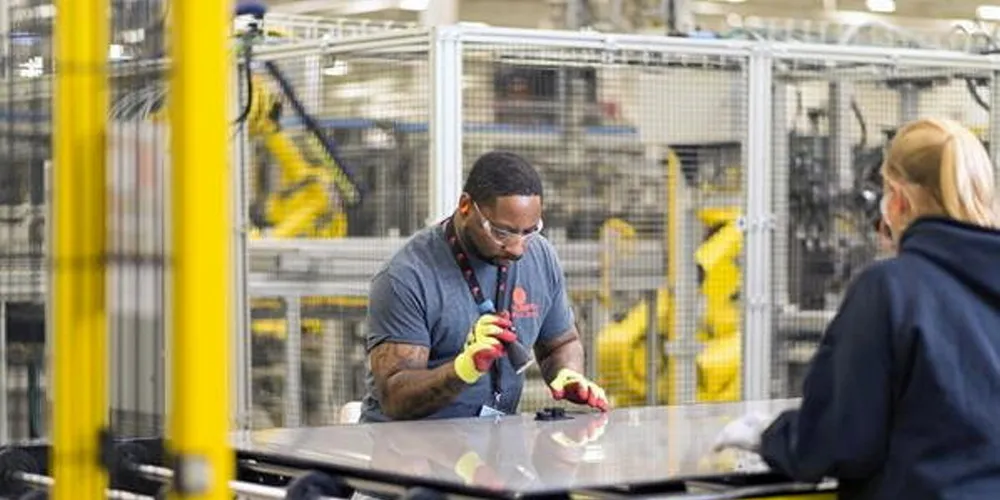Lightsource BP signs up to gigascale solar module delivery from US 'growth partner' First Solar
Multi-year 4GW thin-film PV supply dell among largest for both companies and underscores deeping alliance in major global market poised for take-off

BP solar power spin-out Lightsource BP is “seizing the opportunity” in the US in a solar market on the cusp of unprecedented growth in the latter half of this decade by ramping up deliveries of thin-film modules with a 8.3GW order from panel-maker First Solar.
“The US solar industry is at a pivotal moment, poised to expand at an exponential rate with the Inflation Reduction Act serving as the catalyst,” said Lightsource BP Americas CEO Kevin Smith, referring to the landmark 2022 federal climate law.
“We are seizing the opportunity by not just growing our 20GW development pipeline across the US, but also creating sizeable demand for our US-based partner,” he added, noting that First Solar is investing in innovation and manufacturing, and “supporting thousands of direct and indirect American jobs”.
Lightsource BP’s 4GW order today (Tuesday) puts it on the path to becoming one of the world’s largest users of First Solar’s modules, based on thin-film techology that features a layer of cadmium telluride (CdTel) semiconductor that is 3% the thickness of a human hair. Deliveries are scheduled between 2026 and 2028.
“Our relationship with Lightsource BP is a partnership in growth,” said Georges Antoun, chief commercial officer at First Solar.
“We enable their growth with certainty through long-term pricing and supply commitments and advanced technology, while they enable ours by providing the certainty of demand we need to invest in manufacturing,” he stated.
First Solar is eligible for a new manufacturers’ tax credit of 30% for the amount invested in both new and upgraded factories, as well as another new “advanced” manufacturers’ tax credit of $0.04/watt for each thin film cell and $0.07/watt for each module assembly.
Although First Solar is the nation’s largest solar manufacturer, the US industry predominately sources panels from Southeast Asia that use crystalline silicon technology.
Filling that supply chain will require demand certainty, strategic investments, and US trade policies that are consistent regardless of the political party in control of Congress and the White House, industry observers believe.
Getting there will require demand certainty, investment, and avoidance of “pitfalls” that could hinder growth, industry body the Solar Energy Industries Association (SEIA) noted in a new whitepaper.
As part of its supply deals, Lightsource BP will use First Solar’s recycling programme to manage modules at the end of their operating lives via a closed-loop semiconductor recovery process in new modules, while also recovering materials including aluminum, glass, and laminates.
The IRA also provides funding to facilitate development of domestic facilities that can recycle critical materials used in solar and other renewable energy technologies.
(Copyright)